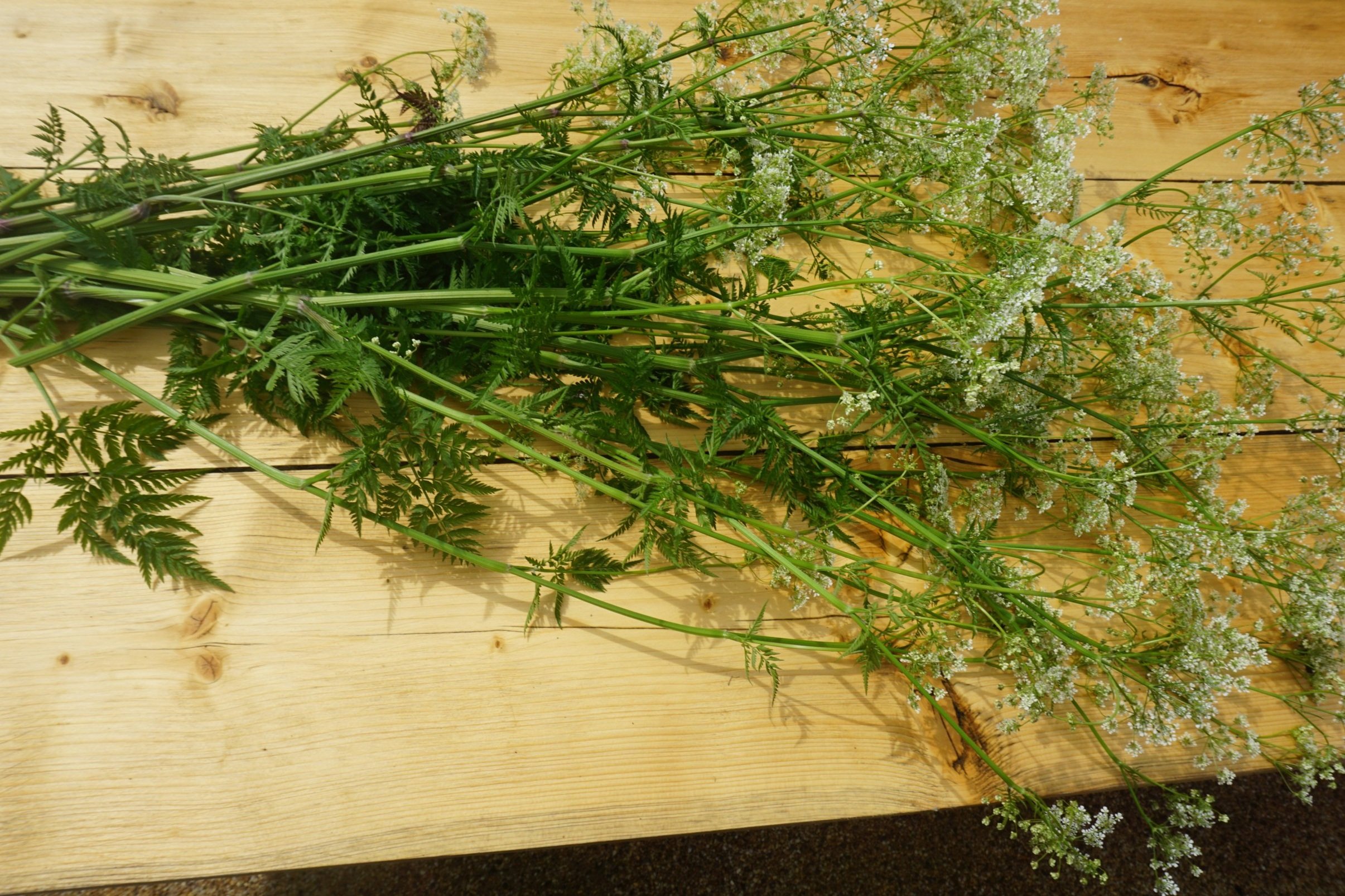Queen Anne’s Lace
Foraged Queen Anne’s Lace
It’s that time of the year when the roadside verges and hedgerows are bursting with Queen Anne’s Lace. Also known as Cow Parsley, Wild Carrot, or by it’s Latin name, Daucus Carota (not to be confused with Hemlock which is poisonous). With its tall petite white flowers, Queen Anne’s Lace looks beautiful on its own in a vase or as as a filler flower.
If you are foraging for Queen Anne’s Lace it is best to pick first thing in the morning. Remember to forage sensibly, following the foraging laws in your locality.
Cut the stems at an angle with a clean pair of secateurs and then sear the bottom of the stems for around 20 seconds in boiling water. Keep the flower heads away from the steam. Keep in a bucket or vase of water in a cool dark room overnight so that the flowers can have a good drink before arranging.
Sear the stems in boiling water
Select a vessel of your choice - I love this gold striped ceramic jug by Matilda Goad. Make sure your vessel is sparkling clean. Arrange the Queen Anne’s Lace by cutting the stems at different lengths. Always recut the stems when you remove them from the water. There is no need to use chicken wire or a flower frog (kenzan) in this arrangement as the jug has a narrow neck. When placing the stems into the jug they form a grid. This helps the stems to support each other. Make sure that there is no foliage below the water line or this will contaminate the water. Don’t be afraid to leave some negative space. This makes the arrangement look wild, airy and more natural.
Arrange any offcuts in pretty little bud vases or jam jars. You can dot these down the dining room table or enjoy a single bud vase on your bedside table.
Your arrangement will last longer if you change the water every few days and the flowers are kept away from radiators and direct sunlight.



